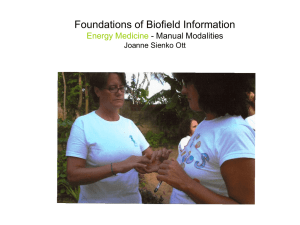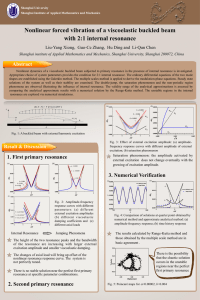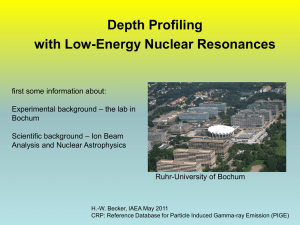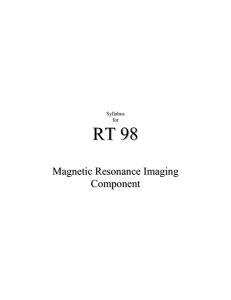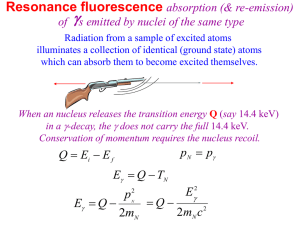CP-D/721 - IAEA Nuclear Data Services
advertisement
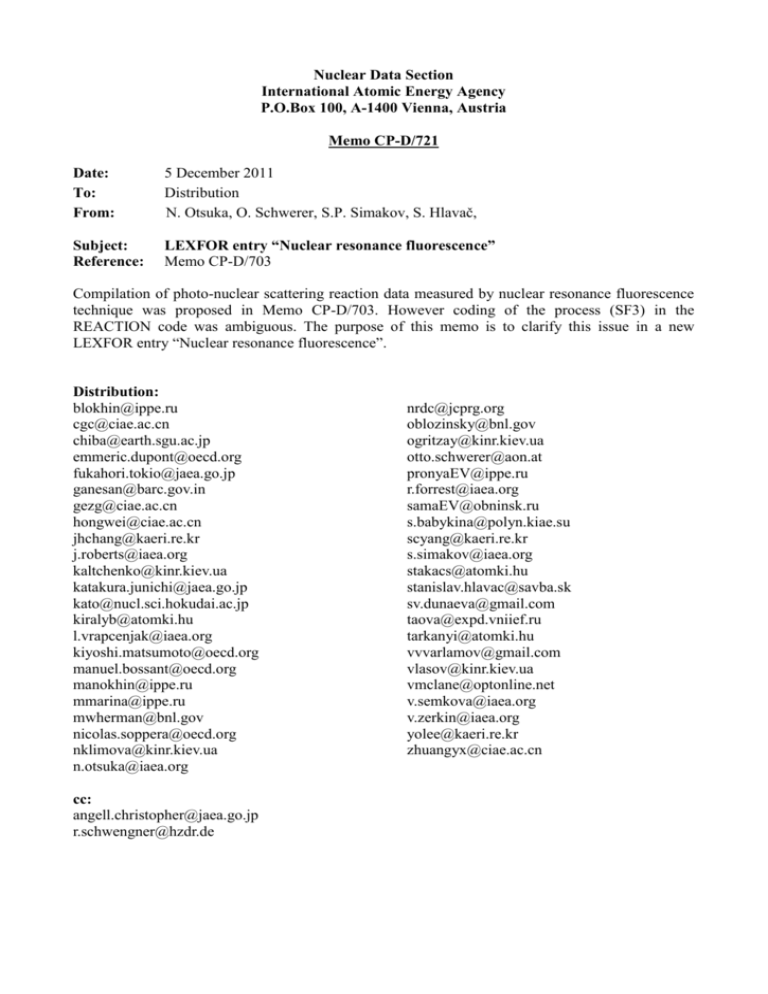
Nuclear Data Section International Atomic Energy Agency P.O.Box 100, A-1400 Vienna, Austria Memo CP-D/721 Date: To: From: 5 December 2011 Distribution N. Otsuka, O. Schwerer, S.P. Simakov, S. Hlavač, Subject: Reference: LEXFOR entry “Nuclear resonance fluorescence” Memo CP-D/703 Compilation of photo-nuclear scattering reaction data measured by nuclear resonance fluorescence technique was proposed in Memo CP-D/703. However coding of the process (SF3) in the REACTION code was ambiguous. The purpose of this memo is to clarify this issue in a new LEXFOR entry “Nuclear resonance fluorescence”. Distribution: blokhin@ippe.ru cgc@ciae.ac.cn chiba@earth.sgu.ac.jp emmeric.dupont@oecd.org fukahori.tokio@jaea.go.jp ganesan@barc.gov.in gezg@ciae.ac.cn hongwei@ciae.ac.cn jhchang@kaeri.re.kr j.roberts@iaea.org kaltchenko@kinr.kiev.ua katakura.junichi@jaea.go.jp kato@nucl.sci.hokudai.ac.jp kiralyb@atomki.hu l.vrapcenjak@iaea.org kiyoshi.matsumoto@oecd.org manuel.bossant@oecd.org manokhin@ippe.ru mmarina@ippe.ru mwherman@bnl.gov nicolas.soppera@oecd.org nklimova@kinr.kiev.ua n.otsuka@iaea.org cc: angell.christopher@jaea.go.jp r.schwengner@hzdr.de nrdc@jcprg.org oblozinsky@bnl.gov ogritzay@kinr.kiev.ua otto.schwerer@aon.at pronyaEV@ippe.ru r.forrest@iaea.org samaEV@obninsk.ru s.babykina@polyn.kiae.su scyang@kaeri.re.kr s.simakov@iaea.org stakacs@atomki.hu stanislav.hlavac@savba.sk sv.dunaeva@gmail.com taova@expd.vniief.ru tarkanyi@atomki.hu vvvarlamov@gmail.com vlasov@kinr.kiev.ua vmclane@optonline.net v.semkova@iaea.org v.zerkin@iaea.org yolee@kaeri.re.kr zhuangyx@ciae.ac.cn Nuclear Resonance Fluorescence Nuclear resonance fluorescence (NRF) is emission of photons following the photon absorption by the target nuclide which leads to the excitation of a strong resonance level. The excited nucleus decays back to the ground state either by emission of a single photon or cascade of several photons. This is equivalent to elastic or inelastic scattering of photon if the emission corresponds to transition from the initially excited resonance level to the ground state or to another level, respectively. Incident photons are usually produced by bremsstrahlung source which has continuous spectrum up to the end-point energy E0, therefore several levels may be excited simultaneously. . The incident photons may also be produced by quasi-monoenergetic gamma-ray sources, with the spectrum typically defined as a Gaussian with a centroid energy of E (~ a few MeV), and width W (~ 100 keV). Several resonances may still be excited by such sources, but with greater selectivity. Figure: Schematic depiction of NRF. On the left side the Bremsstrahlung spectrum with a part leading to the excitation of the narrow resonance is shown. On the right side the excitation and de-excitation of a specific resonance Ex is shown (1: elastic transition, 2: inelastic transition). Transitions to the Ex level from higher resonances are omitted. The energy Ex of level excited in NRF is of the order MeV while the width of the resonances is of the order meV. Scattered photons are detected by High-Purity Germanium (HPGe) detectors with resolution of several keV. The recoiled nucleus has energy just a few eV and is often neglected in derivation of the excitation energy. Because of poor detector energy resolution, the experimental cross section is actually an integral over the resonance width (i.e., resonance area). Assuming that (1) the incident photon spectrum is constant over the narrow resonance width (Ex-δ, Ex+δ) and (2) the observed transition is from the initially excited resonance level Ex, namely, no contribution of feeding of levels higher than Ex, the number of emitted photons N with the energy Eγ’ (= Ex - Ei ) is related with the resonance area: 2 N(Eγ' , E0 ) Ex c Γ Γ 2J 1 g x x0 xi with g x (1) = σ(E γ , E γ' )dE γ = 2 2 ( 2 J 1 ) nT nγ,x E Γ T x x, tot E x where nT and nγ,x are the sample thickness and the number of incident photons in (Ex-δ, Ex+δ), respectively. The detected gamma energy Eγ’ corresponds to the transition from the resonance Ex to the level Ei. The statistical factor gx depends on the spin of target nuclide (JT) and resonance (Jx). The resonance area is not sensitive to the end-point energy E0 if chosen appropriately. Though there are two possible helicity states for incoming photons (+1 and -1), the factor 2 is usually excluded from the denominator of the statistical factor as a convention in NRF study: 2 N(E γ' , E0 ) Ex c " Γ x0 Γ xi 2J 1 g x with g x' (2) = σ(E γ , Eγ' )dE γ = 2JT 1 nT nγ,x Γ x,tot Ex E x Resonance area (integrated cross section) REACTION coding: SCT, EL or INL in SF3, ARE in SF6 Independent variables: when EL in SF3: resonance energy when SCT or INL in SF3 (with PAR in SF5): resonance energy and secondary energy Units: code from Dictionary 25 with the dimension B*EV (e.g., B*EV) When the authors specify (or assume) the observed transition as population of the ground state or an excited state, EL or INL is coded. Otherwise the data set is treated as partial scattering (SCT in SF3, PAR in SF5) with the transition energy under the heading EN-RES and E (repeated twice). Example: 1. Resonance area for the ground state transition REACTION ... EN-RES KEV 1697.8 1728.8 ... (93-NP-237(G,EL),,ARE) EN-RES-ERR DATA KEV B*EV 0.5 5.3 0.2 0.6 DATA-ERR B*EV 1.4 2.3 2. Resonance area for photon with a specific energy when relation with the level energy before the gamma transition is uncertain REACTION (93-NP-237(G,SCT),PAR,ARE,,BRA) ... EN-RES-MAX MEV 2.8 ... E E-ERR DATA DATA-ERR KEV KEV B*EV B*EV 1697.8 0.5 5.3 1.4 1728.8 0.2 0.6 2.3 ... In this case, the resonance energy range may be chosen by the compiler so that the all outgoing photon energies are covered by this range. The end-point energy may be coded under the heading EN-RES-MAX when bremsstrahlung photon source was used. Both the lower and upper boundary may be coded under the headings EN-RES-MIN and EN-RES-MAX when laser Compton scattering photon source was used. The modifier BRA is coded in SF8 when such a photon source is used. Resonance parameters derived from the resonance area (e.g., resonance energy, resonance width) are however coded without this modifier. When correction is done to subtract the feeding effect, it must be mentioned under the keyword CORRECTION. Reference F. Metzger, Prog. Nucl. Phys. 7(1977)53

